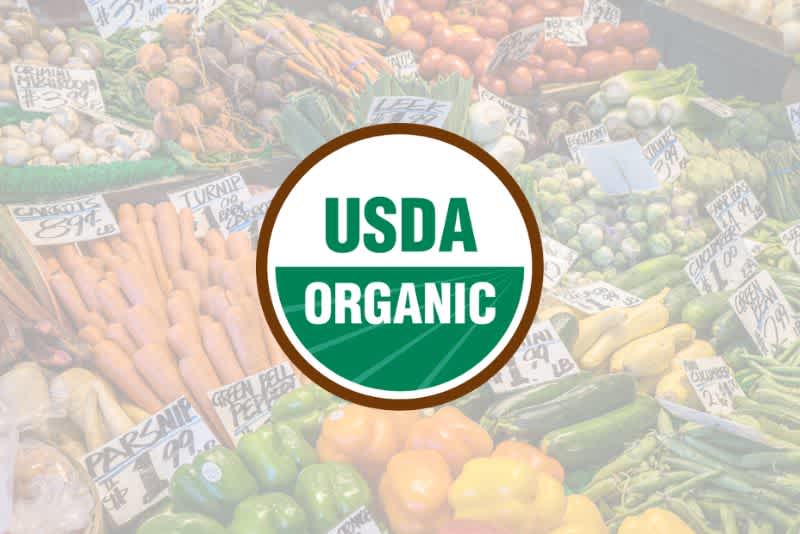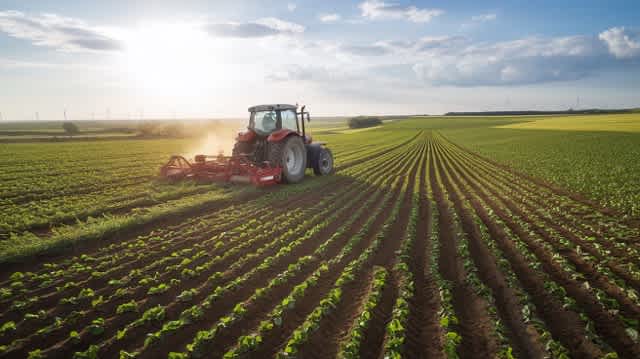Organic and Non-GMO Certifications: A Consumer's Guide
Published: October 28, 2024

The world of food certifications can feel like a maze of claims and promises, but understanding these labels isn't just about making sense of marketing – it's about making informed choices for your health, the environment, and your wallet.
Today we’re going to take a look at two of the most common labels - Organic and Non-GMO certifications.
Does Organic mean Non-GMO
Yes, USDA Certified Organic means the products prohibit GMOs and therefore qualify them as “non-GMO,” though there may still be trace amounts due to cross-pollination or inadvertent contamination.
This certification also ensures additional benefits like freedom from synthetic pesticides, mandatory animal welfare standards, and comprehensive environmental protections.
Understanding GMOs and Organic Certification: What You Need to Know
If you’ve ever stood in the grocery store, staring at labels that seem to speak their own language, you're not alone. Today, we're decoding two of the most talked-about food certifications that impact your daily choices: GMOs and organic certification.
Let's start with GMOs, or Genetically Modified Organisms. These are living organisms whose genetic material has been artificially altered through genetic engineering.
Think of it as a way to "edit" a plant's DNA to achieve specific traits – like making corn more resistant to pests or soybeans more tolerant to herbicides.
The story of organic certification, on the other hand, began with a grassroots movement in the 1940s.
Farmers and consumers were concerned about the industrialization of agriculture and its reliance on synthetic pesticides and fertilizers. Fast forward to 1990, when the Organic Foods Production Act established consistent national standards for organic farming – ensuring that when you see that USDA Organic seal, it means something specific and verifiable.
You and your family might be concerned with these labels if you’re looking for:
Foods grown without synthetic pesticides
Agricultural practices that promote soil health
Products that support biodiversity
Transparency in their food system
While these certifications often overlap, they're not identical twins – more like close cousins. Understanding the difference can help you make informed choices that align with your values and priorities.
The Organic Guarantee: More Than Just a Label
Think of USDA organic certification as nature's most rigorous backstage pass. While many farmers market vendors might tell you their produce is "natural" or "chemical-free," the organic seal is what you want to look for.

But what exactly goes into earning that distinctive green and white seal? Let’s take a look.
Certification
Before a farm can even think about using the organic label, they must complete a three-year transition period.
During this time, the land must be managed without prohibited substances – meaning synthetic fertilizers, pesticides, or GMOs cannot touch the soil. Basically you are hitting the rest button on your farm land.
Annual Inspection
Maintaining organic certification isn't a one-and-done deal. Each year, certified organic operations must:
Complete detailed documentation of their farming practices
Submit to comprehensive on-site inspections
Pay certification fees to maintain their status
Demonstrate continued compliance with USDA organic regulations
The 95% Rule
The product must contain at least 95% organic ingredients to earn the seal.
The remaining 5%? They must be ingredients that aren't commercially available in organic form, and they still need to come from an approved list.
Prohibited List
Organic certification has strict guidelines on prohibited substances and practices. Here is a list of items that are not allowed in organic production:
Synthetic fertilizers and pesticides
Genetic engineering and GMOs
Ionizing radiation
Sewage sludge
Growth hormones and antibiotics (in livestock)
Testing and Verification
Think of organic inspectors as agricultural detectives. They use a combination of methods to ensure compliance:
Regular soil testing
Plant tissue analysis
Water quality assessments
Review of detailed farm records
Inspection of buffer zones between organic and conventional fields
Understanding these stringent requirements helps explain why organic products often come with a higher price tag – you're not just paying for the end product, but for an entire system of agricultural practices and verification methods that prioritize environmental stewardship and food purity.
Non-GMO Verification: Beyond the Butterfly Label
You've probably spotted that distinctive butterfly logo on everything from breakfast cereals to baby food.
But what's really happening behind the scenes to earn that Non-GMO Project Verified seal?
This time, let’s dig into the verification process for Non GMO verification.

Verification
Unlike organic certification's government oversight, non-GMO verification operates through independent third-party organizations.
Think of it as having an independent auditor reviewing every aspect of a product's journey from seed to shelf. This process isn't just a one-time check – it's an ongoing commitment to transparency and traceability.
High-Risk Ingredients
Not all ingredients face the same level of scrutiny, and for good reason. The verification process pays special attention to high-risk crops – those commonly grown from GMO seeds. These include:
Corn and corn derivatives
Soybeans and soy products
Canola
Cotton (especially cottonseed oil)
Sugar beets
For these high-risk ingredients, manufacturers must provide comprehensive testing results and detailed documentation of their supply chain.
Drawing the Line: Action Thresholds
Here's where things get interesting: Non-GMO verification doesn't require absolute zero presence of GMO material. Instead, it sets practical thresholds:
- 0.9% for human food and supplements
- 1.5% for animal feed and supplements
- 5% for cleaning products and textiles
Why these different levels?
They reflect both technical testing limitations and the reality of living in a world where GMO crops are widespread. It's about striking a balance between achievable standards and meaningful verification.
Watching the Supply Chain
Verification doesn't stop at the farm gate. The entire supply chain must maintain:
- Segregation of GMO and non-GMO ingredients
- Thorough cleaning protocols between production runs
- Detailed record-keeping at every step
- Regular audits and inspections
Understanding the Limitations
Let's be transparent about what non-GMO verification can and can't do:
- It doesn't address pesticide use
- It doesn't guarantee organic practices
- It can't test for every possible GMO variant
- Some ingredients are nearly impossible to verify due to processing methods
This verification process represents a significant investment for food producers, but it provides consumers with an additional layer of transparency about what's in their food. While it may not be as comprehensive as organic certification, it serves as an important tool for those specifically concerned about GMO ingredients.
Key Differences Between Organic and Non-GMO: Breaking Down the Details
Confused about why some products carry both certifications while others choose just one? Let’s take a look.
Government vs. Private Verification: Two Different Paths
Think of organic certification as getting your driver's license – it's a government-regulated process with standardized rules across the country. The USDA oversees organic certification through accredited certifying agents, maintaining consistent standards nationwide.
Non-GMO verification, however, is more like joining a private club. The Non-GMO Project, a non-profit organization, sets its own standards and works with independent technical administrators to verify products. While both systems are rigorous, they operate under completely different frameworks and authorities.
Testing: Different Approaches, Different Goals
Here's where things get interesting. The testing requirements for each certification focus on distinct aspects.
For organic certification testing, the focus is on residue testing for prohibited substances. Put another way, the soil quality and farming practices are under the microscope in this case.
Also the entire farming system and its processes are examined and includes annual on-site inspections.
For non-GMO testing however, the focus is specifically on GMO presence and requires testing of the high-risk ingredients list using sophisticated DNA testing methods.
This testing focuses mainly on the end product rather than the growing process.
Time and Money: The Investment Reality
Let's talk about what it takes to get certified – because time and money matter to both producers and consumers. Here’s the breakdown.
Certification Requirement | Organic | Non-GMO |
Initial Transition | 3-year waiting period | None required |
Annual Fees | $750-$2,000+ (size dependent) | $1,500-$5,000+ (product dependent) |
Additional Costs | Ongoing compliance monitoring• Higher production costs• Restricted input supplies | Product testing fees• Supply chain tracking• Batch verification |
Time Investment | Extensive - requires complete system overhaul | Moderate - focuses on specific testing and tracking |
Contamination and Testing: The Science Behind the Seals
Despite precautions, contamination can occur. When this occurs organic farmers must immediately notify their certifier and launch an investigation, often leading to field quarantine.
Non-GMO verification focuses on isolating affected batches and tracing through the supply chain to identify and correct the source of contamination.
Prevention remains the best strategy. Farmers maintain buffer zones – minimum 25-foot barriers between organic and conventional fields – often including natural barriers like hedgerows.
They coordinate planting times with neighboring farms, maintain dedicated equipment, and train staff in contamination prevention protocols.
Unfortunately, these measures require significant investment in time, resources, and testing protocols. It's this dedication to purity that helps explain why certified organic and non-GMO products often carry premium prices – they reflect not just the end product, but the entire system of careful management and verification that ensures their integrity.

Making Informed Choices: Your Guide to Smart Shopping
Understanding the Price Premium
While organic products can cost 20–100% more than their conventional counterparts (with non-GMO somewhere in between this range), prices are continuing to come down due to competition, especially for everyday staples like milk, eggs, and produce.
Finding What You Need
Remember when organic meant a special trip to that one health food store across town? Those days are gone. Major supermarkets now stock extensive organic and non-GMO options, from fresh produce to packaged goods. Many conventional stores have even developed their own organic store brands, making certified products more accessible and affordable.
The Double-Certification Advantage
Some products sport both organic and non-GMO seals, but is the double verification worth the extra cost? For single ingredients like fresh vegetables, the USDA organic seal already guarantees non-GMO status.
However, for processed foods with multiple ingredients, having both certifications provides the highest level of assurance that each component meets your standards.
Final Thoughts
While organic certification offers a broader scope of benefits including environmental stewardship and animal welfare, non-GMO verification provides focused assurance about genetic modification.
Your choice between them – or choosing products with both certifications – ultimately depends on your personal priorities, budget, and values.
Remember, there's no one-size-fits-all approach to making these decisions. Whether you're prioritizing environmental impact, avoiding genetic modification, or balancing both with budget constraints, understanding these certifications empowers you to make choices that align with your goals.
Keep track of all your cattle with the #1 Cattle Management Software
Try out Ranchr today for free